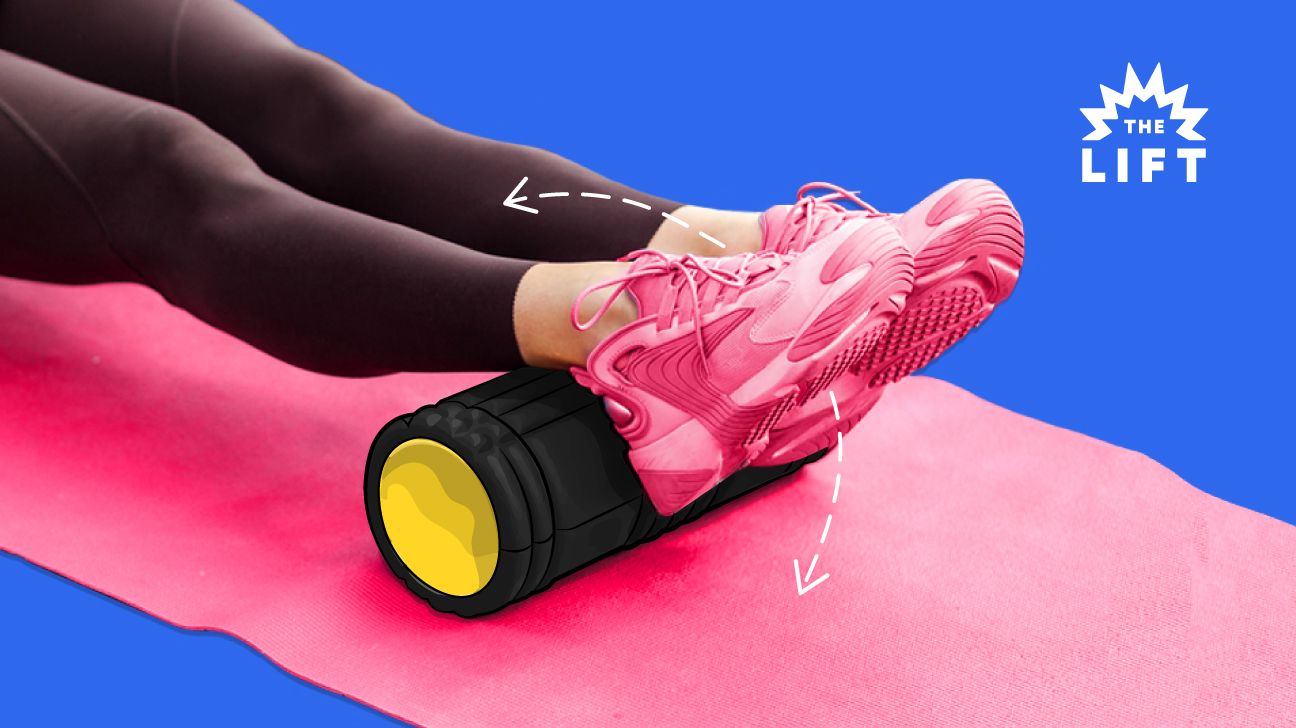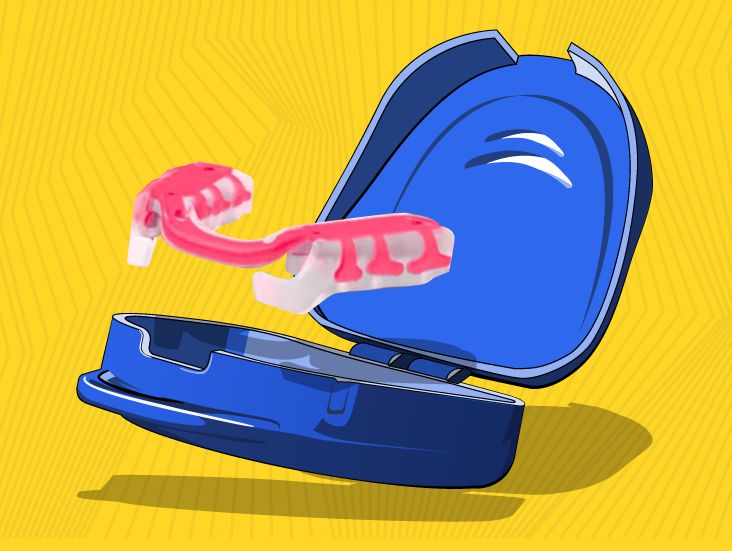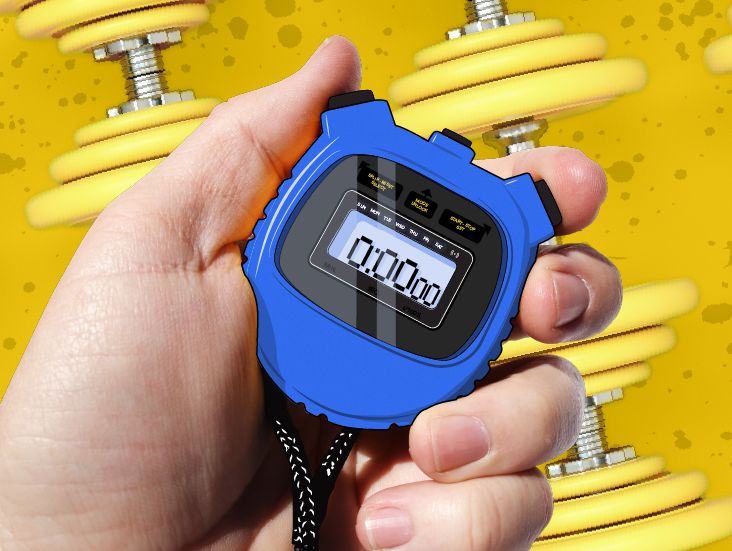
Hips hurting? Knees chatting? Back bugging out? The culprit could be a lack of ankle mobility.
It may not sound very sexy, but good ankle mobility essentially means your joints will be making love to the rest of your body.
Here’s what you need to know.
Mobility = strength + flexibility. Ankle mobility refers to whether or not that combo pack exists in (you guessed it) your ankle area.
“When someone has good ankle mobility, the muscle tissues, ligaments, tendons, and fascia surrounding the ankle joint are not tight and are able to move the way they should,” says physical therapist Grayson Wickham, founder of Movement Vault.
Two main types of ankle mobility
Dorsiflexion: the ability to lift your toes toward your shins, like you do when taking your foot off the gas pedal
Plantar flexion: the opposite of dorsiflexion — the ability to point your toes away from your leg, like when pressing the brake pedal
“When someone has good ankle mobility, they are able to move their ankle joint through its full range of motion,” Wickham adds. “And when someone has imperfect ankle mobility, they are not able to move their ankle through its full range of motion.”
People who fall into the latter camp may experience pain in other parts of their bodies.
In short: We sit A LOT.
“These days people aren’t moving enough,” says Wickham. “Instead, we’re sitting at work, sitting during meals, sitting while bingeing our favorite shows, and sitting during our commute. And the people who are moving often, aren’t moving in a varied-enough way.”
Long distance runners and Peloton aficionados, for example, may move frequently, but they’re moving in the same exact plane of motion (the sagittal plane) over and over.
The problem: Both sets of people aren’t moving their ankles through their f-u-l-l range of motion. As the saying goes: Use it or lose it.
Our footwear choices aren’t helping, either
“The day-shoes and sneakers most people wear all day long are too high,” Wickham says. “They have a 12-millimeter (or so) heel lift, meaning your foot is in a slightly plantar-flexed position all day long.”
And that means the muscles along the bottom of our feet are in a slightly shortened position all day. Doing this long-term can affect our ability to lengthen those muscles responsible for bringing our ankles into a dorsiflexed position.
Plus, most shoes these days are super-duper cushioned. Comfy? Sure. But these foot-mattresses take over the job that the muscles in our feet and ankles should be doing (supporting our bodies).
“With nothing else to do, those muscles start to snooze,” explains Wickham. “And when those muscles aren’t working, they’re weakening.”
Certified personal trainer Julia Hickman, founder of Fastinista Online Studio, adds that previous injuries, other bodily imbalances, age, and diet can also affect ankle mobility.
Good ankle mobility = injury prevention.
“If your ankle mobility is limited enough, it can impact your walking gait,” says Wickham. When your walking gait gets wonky, a chain reaction happens up your body that increases your risk of injury elsewhere.
Hip and knee injuries are especially common in people with limited ankle mobility. “In essence, without adequate mobility, the ankle stops acting like an ankle, which forces the knee or hip to act like an ankle,” Wickham notes.
In the long term, this can lead to overuse injuries in those precious joints. *Sigh.*
Injuries caused by poor ankle mobility
- plantar fasciitis
- Achilles tendinopathy
- shin splints
- patellofemoral pain
- hip and knee injuries
- pulled lower back muscles
Beyond injury prevention, good ankle mobility is important for performance. It’s essential for safely executing exercise movement patterns like the hinge and squat.
Consider the back squat: For you to be able to sit back, ass-to-grass, your knee needs to be able to track over your toes. This requires (that’s right) adequate ankle mobility!
Without that mobility, the best-case scenario is that you shortchange your squat depth, thereby shortchanging the glute-, quad-, hamstring-, and midline-strengthening potential of the movement.
And the worst-case scenario is that you try to squat lower, can’t do that with good form, and force your knees or hips to “act” as ankles, which increases your risk of injury over time.
Yikes!
Good news: There are things you can do to improve your ankle mobility. Specifically, you can try these three exercises.
1. Kettlebell calf smash
If you physically can, try pulling your toes up toward the sky while keeping your ankle planted. Do you feel a stretch in your calf muscle? Unless you have A+ ankle mobility, you probably do.
“The calf muscle is one of the muscle groups that affects ankle mobility,” explains Wickham. “If the calf muscle is super tight, the ankle is going to be limited in its ability to dorsiflex.” That’s why relieving calf muscle tightness is an essential part of improving ankle mobility.
For that, he recommends an active release calf stretch commonly known as the kettlebell calf smash.
How to do it:
- Sit with legs extended in front of you and a kettlebell positioned handle-up next to one leg. Lift your leg and rest your calf on the kettlebell handle, just above your Achilles tendon (a few inches above your ankle).
- Think about pressing your calf down into the handle to increase the pressure, and then rock the muscle from side to side and up and down, massaging it on the handle. For even more pressure, cross your other ankle on top of this one.
- After a few rocks in every direction, shift the kettlebell another 2 inches up your calf and repeat.
- Work your way up your entire calf before repeating on the other leg.
Note: If your calf muscles are super-duper tight, the handle of the kettlebell may be too intense. Try flopping the bell onto its side and using the rounded portion instead. You can also use a foam roller.
2. Half-kneeling active stretch
“To see actual improvements in ankle mobility, you need to work on both dorsiflexion and plantarflexion,” says Wickham.
As an end-range isometric stretch, this exercise does just that.
How to do it:
- Start in a half-kneeling position, with the heel and toes of your front foot on the floor and knee positioned directly over ankle.
- Brace your midline. Keeping front heel on the floor, let front knee track over front middle toe.
- Continue shifting knee forward until you feel a stretch at the back of your ankle. From this position, think about pressing down on the gas pedal of a car, HARD, contracting the muscles in your lower leg. Hold for 10 seconds.
- Relax. Then, keeping front heel on the floor, think about pulling your foot off the gas pedal. Hold this stretch for 10 seconds before relaxing again.
- That’s 1 rep. Repeat for 3 total reps per side.
Note: The first few times you try this exercise, it may feel like A LOT — that’s normal. It’ll get easier over time! “If you need to come out of the stretch, relax, and do some ankle circles, that’s fine, but otherwise plan to do the reps back-to-back-to-back,” says Wickham.
3. Active heel-sitting stretch
TBH, a better name for this stretch would be heinie-to-heel hell. “It’s a little weird,” admits Wickham, “but it works.”
How to do it:
- Start in a tall kneeling position, with tops of feet kissing the floor. Sit your bum back until your cheeks are sitting on your heels.
- Think about pressing tops of feet into the floor (it’s normal for this to be uncomfortable!). Hold for 10 seconds, then relax.
- While squeezing your calf muscles as hard as you can, pretend to peel the tops of your feet off the floor. Hold for 10 seconds, then relax.
- That’s 1 rep. Repeat for 3 total reps.
“You’re really going to feel this exercise in the back of your calves,” says Wickham. “If you start to cramp, just relax and get out of the position. The cramp is a sign that the muscles surrounding the ankle aren’t able to contract and relax very well… yet.”
With practice, this will be less uncomfortable.
Do the above exercises every day and you should feel results pretty damn quick (think 2 to 4 weeks).
But it took years for your ankles to become less mobile, so don’t expect your mobility to return after one stretching sesh.
Practice, as they say, makes perfect more mobile.





